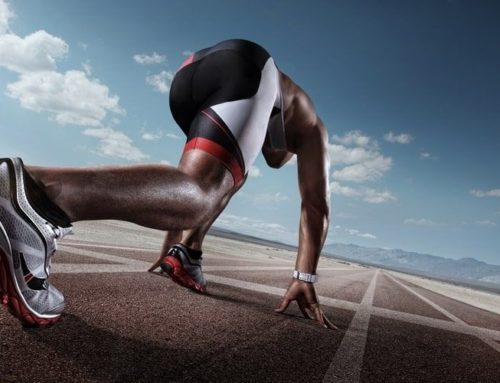Benoy qualified as a physiotherapist in 1998 and has worked extensively in hospital, private practice and sporting settings within the UK, Asia and the Middle East. Having specialised in musculoskeletal care, he works in private practice and as Advanced Physiotherapist for the NHS. Benoy has completed his masters in advanced physiotherapy from the University of Hertfordshire in 2014 and was the national winner for the highest scoring candidate of the society of orthopaedic medicine registration examination and was the recipient of Saunders prize for 2011.
Clinically, he deals with complex patients referred by GPs and for a second opinion on failed patients by other therapists. Benoy loves a challenge, and enjoys treating hip and groin patients and overuse running injuries. He is passionate about application of research in clinical practice and is involved in regular teaching nationwide on multiple lower limb courses
You can sign up to attend Benoy’s courses on our shockwave therapy courses page.
Shockwave therapy is a safe and effective treatment for chronic musculoskeletal (MSK) conditions. As a medical professional with experience in shockwave therapy since 2014 and 5 years of teaching the modality, I’ve encountered these common questions from MSK therapists.
1. What is radial shockwave therapy and how does it work for MSK injuries?
Shockwave therapy, also known as extracorporeal shockwave therapy (ESWT), is a non-invasive medical treatment that uses high-energy sound waves or shockwaves to treat various MSK conditions such as plantar fasciitis, tennis elbow, and Achilles tendinopathy. The shockwaves stimulate the healing process, reduce pain, improve blood flow, and promote the formation of new blood vessels and tissue repair. It’s performed as an outpatient procedure without anesthesia or incisions. The number of sessions and protocol vary based on the type and severity of the injury.
2. What are the key differences between radial and focused shockwave therapy?
The difference lies in the way the shockwaves are generated and delivered. Radial shockwave therapy uses a broader and less intense pressure wave that spreads out radially from the point of origin. This type of shockwave is typically used for treating larger areas of the body and for conditions that are not located at a specific point.
On the other hand, focused shockwave therapy involves the generation of shockwaves from a focused source, delivering high-energy and high-pressure shockwaves to a small and specific target area. This results in a more focused and concentrated delivery of shockwaves, which is often preferred for more precise treatments.
In conclusion, the choice between radial and focused shockwave therapy depends on the target area, the desired level of precision, and the nature of the medical condition being treated.
3. How effective is radial shockwave therapy for Plantar Fasciitis and Achilles Tendinopathy?
The effectiveness of shockwave therapy for plantar fasciitis and Achilles tendinopathy may vary based on factors such as the severity, duration, patient’s age, and overall health, and presence of any underlying medical conditions. However, multiple studies have shown that shockwave therapy reduces pain and improves function in patients with these MSK conditions.
4. What are the benefits and risks of radial shockwave therapy for MSK injuries?
The benefits of shockwave therapy for MSK injuries include non-invasive treatment, reduced pain, minimal downtime, and improved function. The minor side effects may include discomfort or pain during the therapy session, temporary bruising, and minor swelling.
5. How many radial shockwave therapy sessions are required for improvement?
The number of shockwave therapy sessions required for improvement varies based on factors such as the type of shockwave used (radial or focused) the condition being treated and severity of the injury, patient’s age and overall health, and presence of any underlying conditions. On average, patients may need 3 to 6 sessions of 10 to 20 minutes each. The individual protocol depends on the patient’s needs and the medical professional’s recommendation. Some patients may see improvement after 1 or 2 sessions, while the majority may see benefits after 4 to 6 weeks of the initial treatment, with full effect taking around 12 weeks.
6. Can radial shockwave therapy be used with other treatments like physical therapy or medication?
Yes, shockwave therapy can be used in conjunction with other treatments such as physiotherapy, which can improve flexibility, strength, and range of motion. A study by Rompe et al (2009) showed that a combination of shockwave therapy and exercises was superior to exercises alone after 4 months. It’s important to discuss the best treatment plan with a medical professional and keep them informed of any other treatments being received to ensure compatibility and optimal results.
If you are interested in learning more about the practical application of SWT, visit
our training page with multiple courses on all key areas of MSK practice.
Benoy Mathew, MSc, MCSP
Advanced Practice Physio
MSK SWT Specialist
References:
Chamberlain, G.A. and Colborne, R.G., 2016. A review of the cellular and molecular effects of extracorporeal shockwave therapy. Veterinary and Comparative Orthopaedics and Traumatology, 29(02), pp.99-107.
Reilly, J.M., Bluman, E. and Tenforde, A.S., 2018. Effect of shockwave treatment for management of upper and lower extremity musculoskeletal conditions: a narrative
review. PM&R, 10(12), pp.1385-1403.
Rola, P., Włodarczak, A., Barycki, M. and Doroszko, A., 2022. Use of the shock wave therapy in basic research and clinical applications—From bench to bedsite. Biomedicines, 10(3), p.568.
Rompe, J.D., Furia, J. and Maffulli, N., 2009. Eccentric loading versus eccentric loading plus shock-wave treatment for midportion achilles tendinopathy: a randomized controlled trial. The American journal of sports medicine, 37(3), pp.463-470.
Wang, C.J., 2012. Extracorporeal shockwave therapy in musculoskeletal disorders. Journal of orthopaedic surgery and research, 7(1), pp.1-8.




